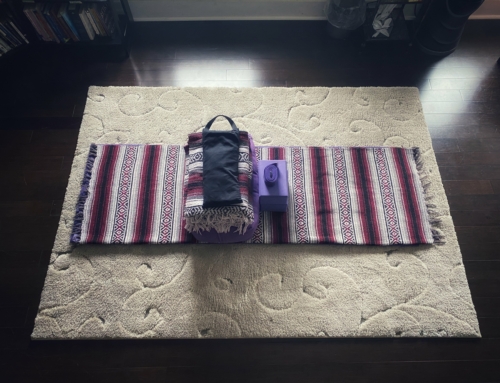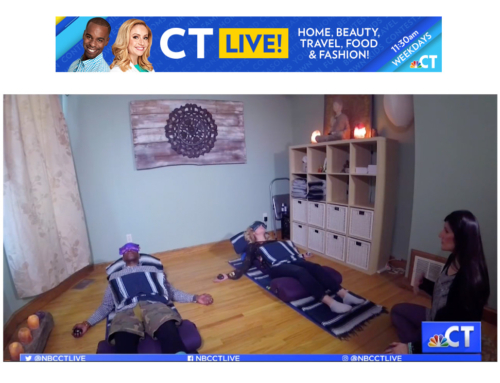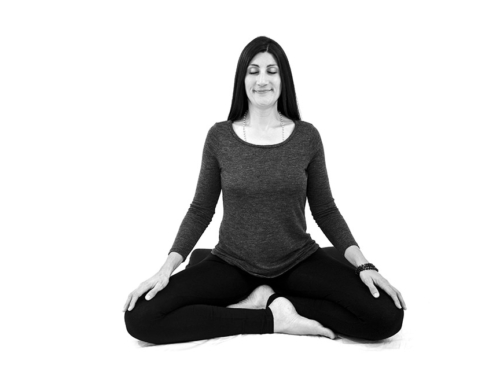Long COVID, also known as post-acute sequelae of SARS-CoV-2 infection (PASC), is a phenomenon where individuals continue to experience symptoms long after the initial infection has passed. The wide range of symptoms associated with long COVID, such as long COVID fatigue, brain fog, muscle pain, and heart palpitations, can be debilitating and impact an individual’s quality of life. Yoga therapy has been shown to have therapeutic benefits for individuals experiencing long COVID fatigue symptoms.
The gentle and restorative physical movements and deep breathing exercises that are a central part of yoga can help to reduce stress and improve physical and mental well-being. In addition, yoga therapy can help to improve circulation, boost the immune system, and increase energy levels, all of which can be beneficial for individuals experiencing long COVID symptoms.
Another benefit of yoga therapy for long COVID fatigue is its ability to improve sleep quality. Research has shown that yoga therapy can help to regulate the nervous system, promote relaxation, and reduce anxiety, all of which can contribute to improved sleep. Improved sleep can be particularly important for individuals with long COVID, as sleep disturbances are a common symptom of the condition.
Yoga therapy can also help to address the emotional and mental health challenges that can accompany long COVID. The mindfulness and self-reflection aspects of yoga can help individuals to process their experiences and manage feelings of anxiety and depression. The supportive and non-judgmental community that can be found with a certified yoga therapist (C-IAYT) can also be a valuable source of emotional support for individuals with long COVID.
Yoga therapy offers a valuable form of support for individuals with long COVID. The physical and mental benefits of yoga can help to reduce stress, improve physical and mental well-being, and address the emotional and mental health challenges that can accompany long COVID. If you are experiencing long COVID fatigue symptoms and other long COVID symptoms, consider talking to your healthcare provider about incorporating yoga therapy into your treatment plan.
Benefits of yoga therapy for long COVID include but aren’t limited to:
- Mitigates symptoms of long COVID
- Reduces stress and improves physical and mental well-being
- Improves circulation and boosts the immune system
- Reduces fatigue
- Increases energy levels
- Improves sleep quality and regulates sleep patterns
- Regulates the nervous system and promotes relaxation
- Reduces anxiety and depression
- Provides a supportive and non-judgmental connection for emotional support
- Helps to process experiences and manage feelings of anxiety and depression
- Offers a gentle and restorative form of physical activity for individuals with long COVID symptoms
- May improve overall quality of life for individuals with long COVID
As a certified and experienced yoga therapist that has worked with individuals with chronic illnesses including long COVID, I’ve shared a few of my favorite yoga therapy methods individuals can incorporate right now in daily life, below. These yoga therapy techniques are accessible and require no previous yoga experience. As with any self-care methodology, the more you practice, the more benefits you will receive. Set small goals for best results. Remember that your wellness is an ever-evolving journey; there is no finish line. There are ups and downs and zig zags and sideways and slantways. Start where you are and trust you are here for a reason.
Accessible daily yoga therapy methods that can help fatigue from long COVID:
Self-compassion
When we’re dealing with the fatigue of COVID, turn to self-compassion. When you first notice that you’re moving slow or have that tired behind the eyes feeling, brain fog or headache, take a pause. Notice that you feel that. Notice if you’re trying to distract yourself from feeling it fully with work or social media scrolling. Just notice. Use self-compassion here. If you have the pattern of self-loathing and want to beat yourself up for feeling this way, notice that too. This inner conflict will only zap your energy further so take a compassionate pause to notice what’s happening inside. Acknowledge the fatigue or symptom and let it be there. Acknowledge that you got COVID. It happened. You can’t go back and un-have it. It just is. And it’s not bad or good. You had COVID and now you’re feeling its effects.
Embrace reality with a compassionate heart, noticing that your body is communicating. And this is an important message. Self-compassion will allow the meaning to come through clearly. Listening to the body’s signals takes time. Taking action from those messages also takes time. Self-compassion is the way. Self-compassion leads to self-awareness. With practice, you will know your body best. You can stop Googling solutions because your body already knows what it needs and you won’t need to rely on anyone else’s generalization or guessing for what makes you feel better. Post-COVID, if you feel winded after you climb a flight of stairs, hear that message. Take action. Pause. Sit. Breathe for a moment and get that little bit of rest to regulate and then continue with your day. This is self-compassion in action. This is developing self-awareness. This is a process of increasing wellness.
Breathe on purpose
When you notice the fatigue, pause, become aware of what you’re doing, where you are and if possible, sit or lie down. And if you can’t right then and there, make it a priority to sit or lie down as soon as you can. The action of sitting and lying down subconsciously cues the nervous system to relax. Once sitting or laying down, close the eyes. Closing the eyes is another simple method to replenish an overburdened nervous system. However, if you have a history of trauma and closing the eyes is too challenging, keep a lower gaze or move yourself to a darker space.
From here, I invite you to focus on breathing. Conscious breathing. Breathing on purpose (yes, you can control your focus and your breath!). While resting, breathe a little lower and slower, on purpose. Know that you are breathing. Feel the inhales and exhales pass through you. Thoughts will come, but let yourself anchor in feeling the breath in the body, rather than thinking the thoughts. Conscious breathing soothes the nervous system and provides added benefits to the lymphatic system, which will clear the virus toxins out. This enhances immune function, which helps your body do what it already knows how to do: stop virus cell replication and fight off the remaining virus cells. Conscious breathing, when practiced regularly, increases lung capacity, which is an important part of energy recovery. Breathing is free and can be done anytime, anywhere. In this case, it’s helpful to add in resting with eyes closed for a deeper restoration. Practice 8-30 minutes for best results.
Take mini-breaks
Work for an hour. Stop for 5 minutes. Take your gaze away from the screens. Close the eyes, if that’s accessible. Stand and take a stretch with the arms overhead, if you have the ability.
I’ve noticed that in the weeks right after the initial COVID infection, it may seem like your energy is back, but then it’s not. So these breaks are necessary as you let your nervous system, body and mind recover at the pace they set, not the pace you set. Resting regularly speeds up healing. So take the time. If you’re a person that is used to pushing through, this one may be challenging. It’s hard to stop. It’s hard to rest. We’re constantly bombarded with cultural cues to hustle and always be and need and get more. So notice. Let it be hard. Let it be challenging and start small. But try. This is for your recovery. No one else’s.
When you are your best, you can bring that best forward to others. If you’re bringing your best, life is simpler. Relationships improve. Self-compassion, contentment, ease and happy show up. These emotions increase wellness. But if you’re bringing your worst, you’ll be more depleted and relationships with the people you love the most will suffer. Self-loathing, shame, guilt, resentment and anger show up. These emotions decrease wellness. The choice is always yours. So take a break. And if the mind has you distracted with overthinking, listen to a sound machine or the hum of a fan or the fridge. And just listen. Thoughts will come. Notice those thoughts and then just listen again without going down the rabbit hole of thinking. Just listen. If you’re new to this, remember it will take some time to strengthen this muscle. So let that be. And listen. Listen to the sound, not the thoughts.
Long COVID fatigue is temporary
Everything is temporary. This will change. Everything will change. Change is the one thing we can count on. And taxes. And death, but that’s another blog for another time.
Set up a screen-free evening routine, set regular sleep and wake times and get more sleep.
Information that comes in through the eyes, via light vibrations, goes directly into the brain to be processed. Blue light given off by screens in the evenings tricks our brain into thinking it’s daytime, which inhibits the release of sleep hormones. Time away from screens in the evenings strengthens the natural circadian biorhythm which regulates the sleep and wake cycle. This hormonal rhythm—present in all beings on the earth—increases energy in the morning to wake you up and be alert for the day. It also makes you sleepy in the evenings, to shut you down for restful sleep.
Reinforcing regular sleep and wake times enhances this ability to let it happen naturally without synthetic sleep aids. Emerging research shows that consistent bedtimes and wake times increases neurological health as we get older. We also know through research that enough sleep provides ample time for cell restoration and repair, which we need each evening. The fatigue of long COVID is telling you to rest. So listen. Get the rest your body needs and let that be okay that you need it right now. Setting up new lifestyle sleep habits that nurture less evening screen time, regular wake and sleep times (even on the weekends) and increased sleep amounts sets you up to not only clear the COVID virus out, but to also create space for a continuum of increased wellness.
All of the yoga therapy for long COVID fatigue methods mentioned here take practice
You get out what you put in. Invest in yourself. Invest in your recovery. And with practice, my friend, you will create lasting positive change and increase your overall well-being.
Work with me
I teach private, one-on-one therapeutic, gentle, restorative yoga therapy sessions in-person in Southington, CT or online via Zoom.
Book your session
Learn more about yoga therapy




